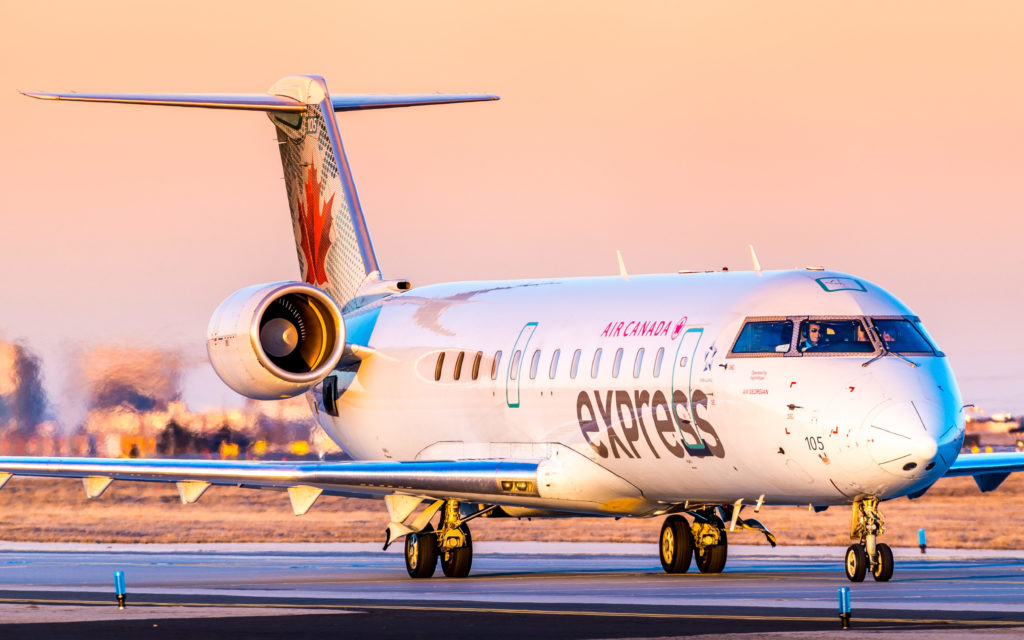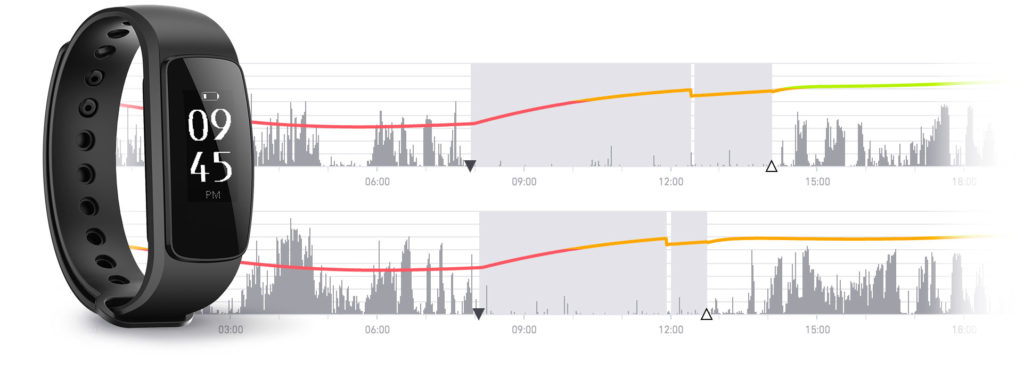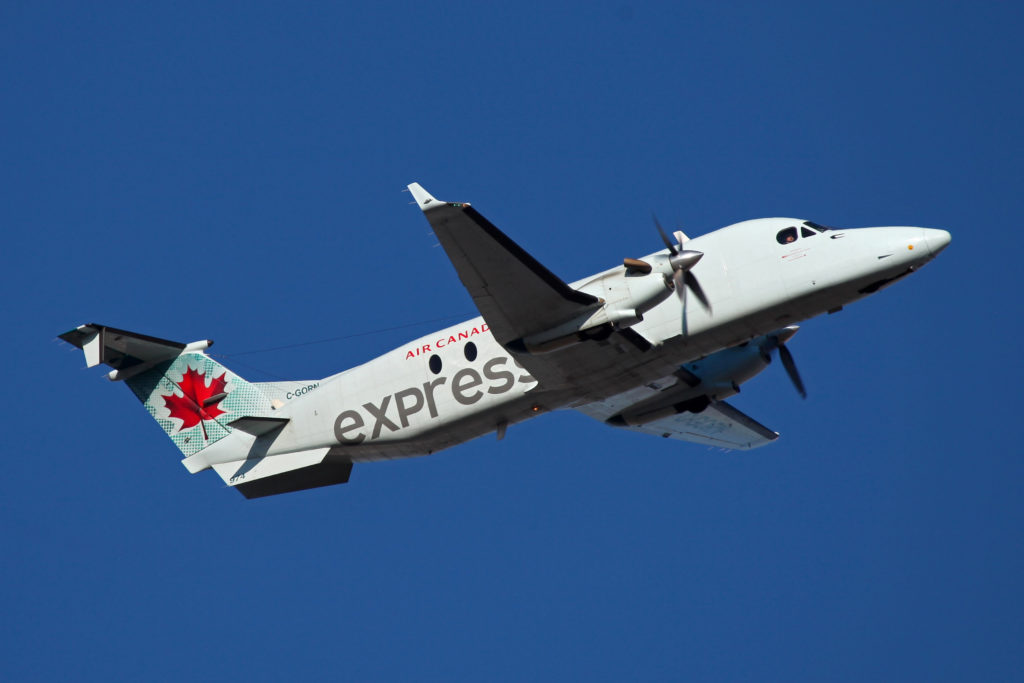Estimated reading time 8 minutes, 41 seconds.
Flight and duty times and their potential effect on pilot fatigue remain a challenge for carriers worldwide.
Canadian operator Air Georgian Ltd.–which flies a fleet of 17 Bombardier CRJ 100/200s and 13 Beechcraft 1900 turboprops to carry 1.5 million passengers annually as an Air Canada Express partner–is tackling that challenge head-on.

Well, wrist-on, as it were.
The Toronto-based carrier has been working for more than a year with Vancouver’s Fatigue Science on promising research using “wearable technology.” More than 40 of its pilots have been field-testing something that looks like a smart watch, but is actually Fatigue Science’s proprietary Readiband. The device essentially uses accelerometer technology to monitor pilots’ wrist movements on the job or when resting or asleep.
Air Georgian purchased its Readibands but data collection and analysis is contracted to Fatigue Science. The 2006 startup uses a biomathematical fatigue model developed by the U.S. Army Research Laboratory at a cost of more than US$37 million. It correlates sleep and fatigue levels to determine the point at which the wearer’s fatigue levels are the equivalent of having a blood alcohol reading of 0.08 per cent, the level at which many jurisdictions consider a motorist legally impaired.
Having had a “no questions asked” policy concerning fatigue for years, Air Georgian clearly buys into the fact that a tired pilot is arguably an impaired pilot. As of October 2018, the Transportation Safety Board of Canada had identified fatigue as “a causal or contributing factor or a source of risk” in the course of 34 aviation investigations.
Troy Stephens, Air Georgian’s vice-president of operations and a CRJ captain with nearly 8,000 hours in his logbook, has worn a Readiband since the project began. He has noticed that it provides an accurate record of when he is deeply asleep, whether his sleep is disturbed, when he is beginning to awaken and when he is fully awake.
Individual pilots can view their personal profile with the Fatigue Science app and gain a working knowledge of their fatigue patterns and trends. Providing guidance with tools and educational graphics, the app helps them to improve their sleep and reduce fatigue levels.

“The app doesn’t say, ‘You didn’t get eight hours so you’re not fit,’ ” Stephens told Skies. “The Readiband monitors three days in a row and comes up with your sleep averages. It’s always taking three days of information . . . I sleep for an average five-to-six hours, so it knows that if I don’t get those hours of sleep.”
When it comes to time in the cockpit, changes in flight schedules might yield a low reading on the Readiband and prompt Air Georgian to reassess its schedule management.
John Tory, vice-president of corporate development and government relations, added that the company reached out to Fatigue Science to start the project after learning about others’ experiences. Its clients include the U.S. military, top-tier sports teams and international construction and heavy equipment companies, all of which have been trying to manage fatigue better.
There were questions from Air Georgian pilots about how the collected data would be used, but that concern likely was laid to rest by the fact that any data turned over to Air Georgian management is completely anonymized after it has been analyzed and aggregated by Fatigue Science.
Tory said that it is “totally normal and healthy” to ask those kinds of questions and that “as we move forward with this and determine the best method of capturing and using data, we want to work with our pilots to make sure they’re comfortable with it and they understand that our objective is to understand fatigue health, to promote and improve safety.”
The current focus is on establishing a baseline to help Air Georgian assess how pilots are affected by scheduling, whether changes are a factor, and how that can affect their quality of rest. “The ultimate goal is . . . a sufficient understanding so that we could build a short-term predictive model as to what changes look like on the broad system level and, where available, down to the individual pilot level.”
Air Georgian’s operations are effectively driven by Air Canada’s schedule. “Individual pilots’ schedules will change month to month, based on what they bid (for flights) and what else is happening in their lives,” said Tory. “Any reasonable interpretation of the working day would have to take those into account. We’re going to ensure that our project encompasses all aspects of our schedule.

“The end game . . . is safety. We are considering everything scientific that monitors from the system level down to the pilot level to give us a better understanding of the human components of fatigue and how we can protect safety.”
Stephens said Air Georgian has “no problem” sharing its findings with Air Canada and other carriers. “The more people we have involved, the better,” he said, adding that Transport Canada, which has regulatory oversight of flight and duty times, is aware of the project.
“We’re also putting this into our Safety Management System so that we will be able to start tracking data, and once we start building our Fatigue Risk Management System (FRMS), then we’ll present it to Transport,” said Stephens.
Meanwhile, pending regulatory approval of an FRMS which could be more widely applied, Air Georgian plans to use its suite of fatigue recording, reporting, and management tools as an integral part of its operations. That’s why the company welcomed Transport Canada’s publication on Dec. 12 of updated flight and duty time regulations, a year and a half after publishing a draft version which continued to generate debate.
“While no set of regulations can be expected to entirely address any one stakeholder’s concerns, and Air Georgian has expressed their reservations about aspects of the regulations, Air Georgian sees this amendment as a positive first step towards the inclusion of scientific research and evidence-based individual data into pilot fatigue management,” the company said in a statement shortly after the updated rules were published.
“These regulations provide the flexibility needed for Air Georgian to continue to be among those operators leading the industry in their understanding of human rest, the effects of fatigue, and the risks of inaction in addressing fatigue.”








